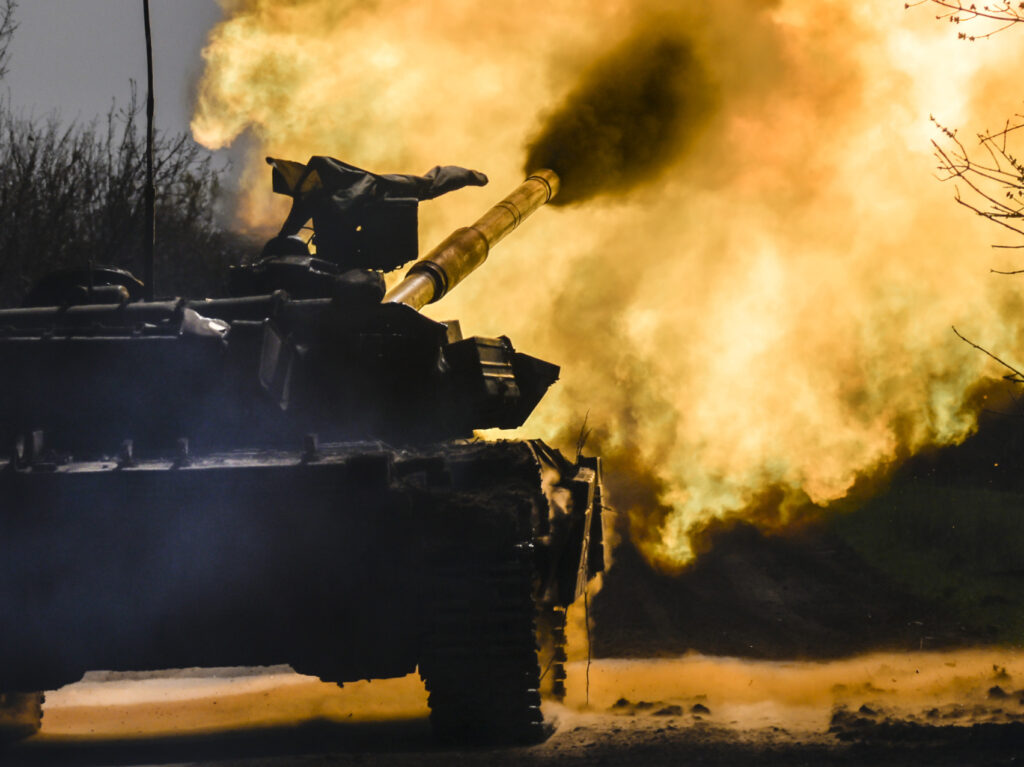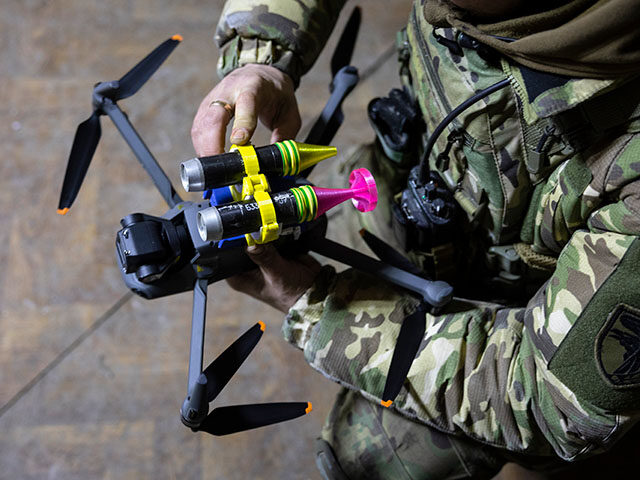The Economist on Wednesday reported the Ukrainian military has found an innovative way to meet its need for more ammunition: using 3D printers to manufacture the components for over 30,000 bombs over the past four months, at a cost of less than four dollars per bomb.
The bombs, whose various designs have nicknames like “candy bomb” or “rabbit bomb,” are meant to be carried into battle by drones — a platform Ukraine has used very effectively against the Russian invasion force. If Russia’s latest claims are to be believed, the Ukrainians are even sending drones into Moscow to bomb government office buildings.
They are cheap—and surprisingly effective https://t.co/n6RZIHIWKp
— The Economist (@TheEconomist) August 2, 2023
The drone bombs are generally about the size of hand grenades, weighing in at two pounds or less. Drones can drop such munitions right on top of enemy troop concentrations or vehicles, putting a small payload of explosives and shrapnel to very efficient and demoralizing use.
When Ukraine used up its inventory of small bombs, plus most of the munitions shipped to it by the U.S. and European allies, teams of amateur volunteers began using their 3D printers to create the shells and fins for more bombs.
RELATED VIDEO — SO LONG, COMRADE! Ukrainians Remove Hammer and Sickle from Giant Kyiv Monument:
Suspilne News via StoryfulAs far back as April, the Washington Post reported that “in underground workshops across eastern Ukraine, soldiers are using 3D printers and recycling unexploded ordinances to create alternative munitions.”
Even earlier, in January 2023, the New York Times (NYT) interviewed a unit of Ukrainian soldiers who were using “double-sided tape, gloves, Allen wrenches, a soldering iron, 3-D printed plastic, ball bearings, a digital scale” to design improved hand grenades and drone bombs.”
“War is an economy. It’s money. And if you have a drone for $3,000 and a grenade for $200, and you destroy a tank that costs $3 million, it’s very interesting,” an enterprising Ukrainian 3D printer jockey told the NYT.

A Ukrainian tank opens fire on targets to support infantry units on the frontlines amid the Russia-Ukraine war in Avdiivka, Donetsk Oblast, Ukraine on April 17, 2023. (Muhammed Enes Yildirim/Anadolu Agency via Getty Images)
Civilian volunteers, both inside and outside Ukraine’s borders, soon began offering their assistance. It is a universal truth, across all nations and cultures, that people who own 3D printers are very eager to demonstrate that they can make anything.
Different teams of volunteers came up with about 200 different designs, but all of them are very inexpensive to produce. One designer in Poland came up with a bomb design called the “Big Egg” that can be produced for about $3.85, not including its explosive and shrapnel payloads.
The Economist quoted Ukrainian military personnel who said the “candy bombs” are not only quickly produced and inexpensive, but they might even be more effective than off-the-shelf drone weapons. Some of the innovative designs created by 3D printer weaponsmiths are reportedly more accurate and better at dispersing shrapnel over a wide area, than previous factory-made bombs.
One Ukrainian soldier who visited the so-called “candy shops” full of 3D printers told the Economist that the amateur weaponsmiths are obsessively using software to model the shrapnel dispersion patterns from their bomb designs, constantly refining them for even greater effectiveness.
The candy shops have also enlisted the ChatGPT artificial intelligence system for engineering assistance – something that was theoretically impossible because ChatGPT includes software blocks to prevent it from assisting with weapons manufacturing, but the weaponsmiths apparently found a way around those safeguards.
Volunteers working outside Ukraine also found a way to bypass customs restrictions by claiming their 3D-printed plastic bomb parts were “children’s toys or candle holders.” Ukrainian customs officials are evidently working very hard to avoid noticing that the shipments are not, in fact, children’s toys or candle holders.
“Some candy bombs can even be used against armored vehicles. Copper and aluminum are pressed inside these bombs into a specially designed cone shape. When the explosives detonate, the metals are transformed into a thin jet of superheated plasma that can bore its way through armor,” the Economist reported.
The biggest obstacle to stepping up production of the simpler 3D-printed anti-personnel drone bombs is apparently a shortage of ball bearings to use as shrapnel. The Ukrainian military has an abundant supply of explosives, but ball bearings have proven to be the shrapnel payload of choice for almost every candy bomb design. The Washington Post report in April described Ukrainian soldiers dismantling larger munitions such as Claymore mines to scavenge ball bearings for 3D-printed drone bombs – a risky endeavor, as the factory-made bombs are prone to exploding when disassembled incorrectly.

COMMENTS
Please let us know if you're having issues with commenting.